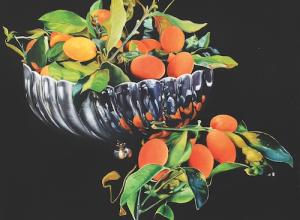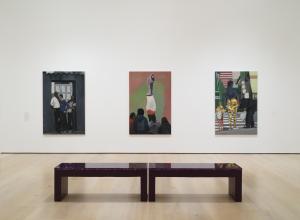Since the Soviet invasion of Afghanistan in 1979 and continuing today, traditional Afghan rug weavers have incorporated stylized representations of political figures, Kalashnikovs, flags, maps, architectural landmarks, tanks, drones, and ammunition amid colorful floral and geometric patterns—designs reflecting a reality familiar to multiple generations in this war-torn region. In 1971, the Italian conceptual artist Alighiero Boetti (1940-1994) began commissioning Afghan weavers to produce his now-famous series of map textiles originally inspired by his collected newspaper illustrations of the 1967 Arab-Israeli Six-Day War. Years later, during the Soviet invasion and rise of the US-backed Mujahideen, numerous war rug artists began to reuse Boetti’s visual mode in order to portray political maps of Afghanistan and neighboring regions overlain with representations of munitions, soldiers, fighter jets, and historical people and events. Designs from the 2000s feature the collapsing World Trade Center Towers behind peace doves and conjoined US and Afghan national flags. This exhibition presents a selection of rugs that simultaneously document the history of a region while standing as a complicated testament to a still viable expressive and contemporary artistic tradition impacted by unusually diverse economic and political pressures.
WARP: War Rugs of Afghanistan
Museum
Start Date
Friday, February 7, 2020
End Date
Friday, May 8, 2020
Venue
Fleming Museum of Art
City
Subscribe to our free e-letter!
Webform























